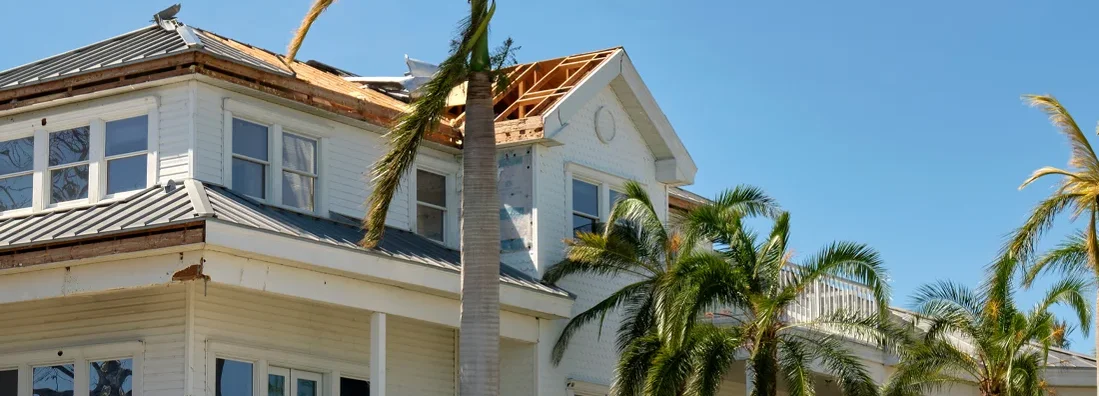How To Calculate Home Replacement Cost

Jeff Green has held several positions at life insurance companies, Wall Street firms, and distribution organizations over his 40-year career.

Insuring your home according to its replacement cost can help make sure you have adequate protection if the worst-case scenario happens. Your home’s replacement cost is the estimated cost to rebuild it to a comparable standard and condition if it gets destroyed.
To calculate your home’s replacement cost, find the current average construction cost per square foot in your area and multiply it by your home’s square footage. This will give you a general estimate, but there are other factors to consider when calculating home replacement costs, such as the construction style and the materials used in the home.
Because costs fluctuate, it’s important to regularly review and update this number and adjust your home insurance accordingly. Here’s what you should know.
What Is the Replacement Cost of a Home?
From an insurance perspective, your home’s replacement cost is the estimated total cost to rebuild it. This means using the same or comparable materials, with factors like the home’s size, construction style, and cost of labor and materials taken into consideration.
It’s important to note that replacement cost is different from actual cash value. Actual cash value refers to the home’s estimated value before it was destroyed, accounting for depreciation. This is an important distinction because replacement value helps ensure you can rebuild your home to its original grandeur, while actual cash value doesn’t hold the same promise.
Imagine, for instance, that a tornado destroys your metal roof. If it’s insured according to replacement cost, your insurance company should help cover the cost to install a new metal roof. With actual cash value, depreciation is considered, so your budget could be limited to lower-cost materials.
Replacement Cost Value vs. Actual Cash Value
Replacement cost and actual cash value are two different ways that insurance companies calculate the value of a damaged or destroyed property.
Replacement cost insurance means compensation is based on the real-time cost of replacing the damaged materials with an exact (or near-exact) match, including labor. It should help ensure you can afford the repairs with minimal changes to your home.
Actual cash value is based on the cost to replace the damaged property, minus depreciation. Age, market conditions, and existing damage are all considered when assessing depreciation. For this reason, actual cash value often doesn’t fully cover the costs of restoring the property.
Calculating the Replacement Cost of Your Home
Want to determine how much it would cost to rebuild your house to help ensure your claims are fully covered? To arrive at the replacement cost value (RCV) of your home, you can multiply its square footage by the average construction cost per square foot in your area. The formula looks like this:
RCV = local construction cost per sq. ft. x home sq. ft.
There are other ways to determine your home’s replacement cost value. You may:
- Get an estimate from your insurance company: Insurance appraisers typically use their own methods to calculate the replacement cost of a home, aided by sophisticated software programs. Unless an appraiser visits in person, it may not be an exact, accurate estimate.
- Hire a local, licensed appraiser or contractor: This is often the most accurate estimation. Local contractors and appraisers have more knowledge of your area's codes and costs, and an in-person inspection allows for consideration of your home’s unique features or materials.
- Use an online replacement cost calculator: Free or paid online tools use local metrics and home characteristics to build your replacement cost estimate. However, they are also limited in their ability to be detailed and thorough.
Factors That Impact the Replacement Cost of a Home
Square footage and labor costs aren’t the only factors that determine the replacement cost of your home. Factors that affect its worth, such as luxury materials or top-of-the-line fixtures, will also affect its replacement value. Here are several of these considerations:
- Age of the house: Building standards and materials differ throughout the years, so your home’s age could be a clue to its quality and safety, influencing costs.
- Features of the home: Features include building materials, like shingles, hardwood floors, plush carpets, and linoleum. The more high-quality materials are in your home, the more it will cost to rebuild.
- Fixtures in the home: Fixtures like lighting, cabinetry, and countertops affect replacement cost value the same way features do. If you have expensive materials like marble or chandeliers, your replacement costs will be higher.
- Style of house: The style of your home may affect its value based on the complexity and labor involved in recreating it. Shotgun houses, for instance, may cost less to rebuild than Victorian-style homes.
- Type of roof: The materials, size, and complexity of your roofing also influence replacement cost. A roof with solar panels and chimneys will likely have a higher replacement cost than a simple shingle roof.
- Local building codes: When a home is rebuilt, it must comply with local building ordinances. If it wasn’t up to date with building codes, then the replacement cost could be far higher than the actual cash value to meet these regulations.
- Type of foundation: A crawlspace or slab foundation might cost less to replace than a home that sits on a fully finished basement.
- Outdoor features: Account for patios, decks, porches, and awnings in your home’s replacement cost estimate.
- Home improvements or additions: Update your insurer on significant upgrades or additions you make to your home, so your replacement cost coverage can be adjusted accordingly.
How Does the 80% Rule Work in Homeowners Insurance?
For your home to be considered fully covered, you should insure it for at least 80% of its replacement value. If you don’t, your insurer may only pay out a portion of the replacement cost for claims, proportional to your insurance level.
Let’s say your home’s replacement value is $250,000, and it sustains $170,000 in damages from a storm. To be fully covered, your home’s coverage limit should be $200,000. But what if it’s only insured up to $180,000?
Because your home isn’t fully covered, your insurer will only pay a percentage of the claim, even though your limit of $180,000 is greater than the cost of the damage. The percent difference between your actual coverage limit and the full coverage limit dictates how much they’ll pay.
In this example, you’ve only insured the home for 90% of the recommended $200,000. Thus, your insurer will only pay 90% of the damages ($153,000). You’re expected to cover the remaining $17,000 out of pocket.
Types of Home Replacement Cost Policies
Three different types of replacement cost policies exist: standard, extended, and guaranteed. An experienced independent insurance agent can help you understand the differences between them and which is the best choice for your home, risk tolerance, and budget.
Here’s more information on the types to get you started:
- Standard: Standard replacement cost is basic coverage that helps cover the cost of rebuilding a home using similar materials, up to a specified limit.
- Extended: Extended replacement coverage means the insurer agrees to pay a set percentage over your home’s estimated replacement cost if needed. This way, you’re still covered if costs increase suddenly.
- Guaranteed: Guaranteed replacement cost insurance is the most robust form of coverage, and often the most costly. This type of policy has no specified limit because your insurer agrees to fully cover the cost of rebuilding your home to its original condition, regardless of price.
Does Home Replacement Insurance Cover the Contents of a Home?
A standard homeowners policy helps cover your personal possessions, usually up to 50% of your home’s total coverage level. If your home is insured for up to $225,000, then your personal possessions should be covered up to $112,500.
For a smooth claims process, you should document as many of your personal possessions as possible, particularly high-value items like electronics. Your inventory should include details like brand name, model and serial number, and appearance.
Other tips for documenting your belongings include:
- Prioritize items that are most valuable, documenting them first.
- Group similar items together, such as appliances or furniture by room.
- Take photos of items to help document details/condition.
- Include receipts for high-dollar items in your inventory.
- Keep a digital copy of your inventory.
- Store physical copies of your inventory in secure areas, like a fireproof safe or a friend’s home.
- Update your inventory every time you make a purchase (or when something is lost/destroyed).
If you have high-value items, like fine jewelry, you may need to add a scheduled property endorsement or rider to ensure they’re fully covered.
FAQs about Calculating Home Replacement Costs
Replacement cost home insurance helps cover the real cost to rebuild your home using comparable materials.
Replacement cost can be calculated by multiplying your home’s square footage by your area’s average construction cost per square foot.
You may also use online tools, get an appraisal from your insurer, or hire a private contractor or appraiser to provide an estimate.
No. Market value is the amount a buyer would pay for a home, not the cost to rebuild it.
No. Dwelling coverage is the insurance that protects your home. Replacement cost is how much dwelling coverage you choose.
Yes. Your homeowners policy should cover your belongings.
Size, materials, style, fixtures, features, outside elements, age, foundation, building codes, and more affect a home’s replacement cost value.
Pricing will vary based on your location, desired coverage, and home characteristics and value. Guaranteed replacement coverage for a mansion in California, for instance, will cost more than standard replacement coverage for a small home in Tennessee.
https://www.thezebra.com/homeowners-insurance/guide/how-to-calculate-home-replacement-cost/
https://www.iii.org/article/insurance-for-your-house-and-personal-possessions
https://www.iii.org/article/how-settlement-amount-determined
https://www.iii.org/article/floaters-and-endorsements-special-coverage-valuables
